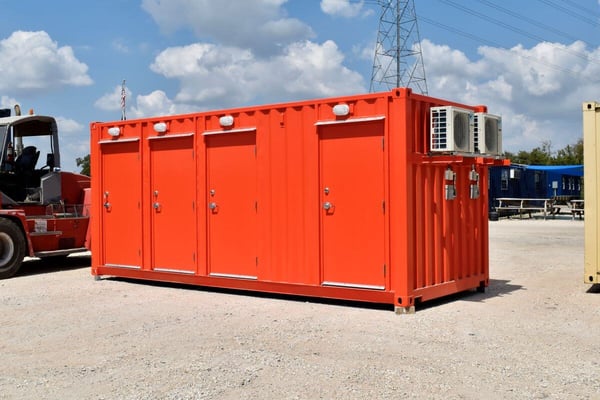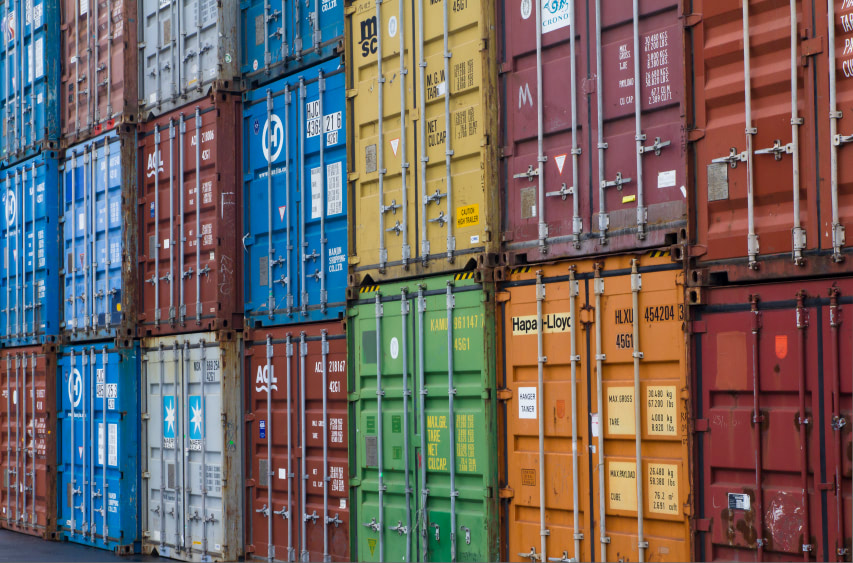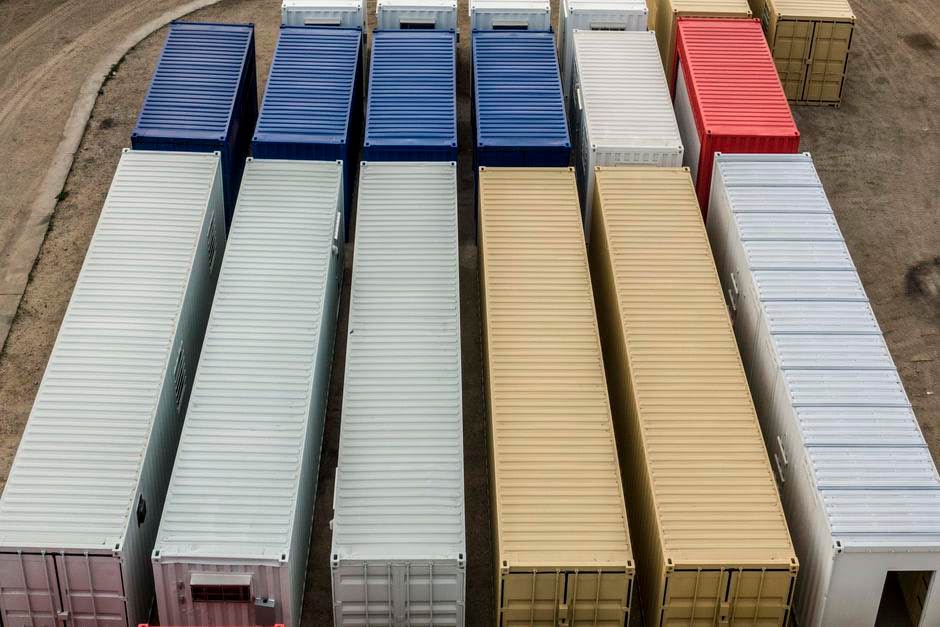10 FAQs About Plumbing & Modified Shipping Containers
 Becca Hubert | Oct 30, 2024
Becca Hubert | Oct 30, 2024

Here at Falcon Structures, we’ve seen modified shipping container bathrooms and locker rooms surge in popularity in the last few years, so much so we jokingly call ourselves “the bathroom company.” While customers are pleased to find their timely, portable bathroom and locker room solutions, they also have lots of questions around the plumbing of it all. From what you need for site setup to how to prep for a freeze, we’ve compiled our most frequently asked plumbing questions below.
1. How does a container hook up to plumbing?
If your container has sinks or showers, you’ll need a clean water inlet line, typically ¾”. If it has toilets or urinals, you’ll need access to a septic tank or sewage line.
2. Can I hook up plumbing myself?
We strongly recommend hiring a licensed plumber to connect your container’s plumbing
3. Do Falcon containers have gray water holding tanks like an RV?
No, our containers typically don’t have gray water holding tanks.

An accessible container bathroom with sink, toilet, tankless electric water heater, climate control, and coin vinyl flooring.
4. How is a restroom container portable?
Container restrooms are highly portable and can be easily moved as long as a clean water source and septic or sewage connection are available at the new location.
In rare cases, we support customers in extremely remote locations with a design for a blackwater tank. This route requires the customer to be aware of local waste management regulations and have a reliable provider for servicing the tank.
5. Is there a limit to how much plumbing a container can have?
We’ve found that a 40-foot container can have a maximum of 10 fixtures, or five for a 20-foot container. For perspective, here’s a case study of a container locker room with 10 showers along one 40-foot container wall.
6. What size plumbing lines do I need?
For most containers, a ¾” line is standard. However, for containers with multiple fixtures (like a 40-foot bathroom container), we may upgrade to a 1” inlet or even multiple inlet points. This would be discussed in the design process, and setup would be easily manageable for a licensed plumber once onsite.

This is an example of a standard Falcon container plumbing port: 3/4" water inlet, drainage valve, and 3" PVC drainage hookup.
7. Can modified containers have hot water?
You bet! We offer electric tankless water heaters tailored to different fixtures and needs. For example, a 6 kW heater works well for a pair of sinks, while an 18 kW heater can power a pair of showers. This customization helps provide a steady hot water supply.
8. Can my container have a floor drain so I can spray down the inside?
Yes, floor drains are a standard feature in our bathroom and locker room containers. These floor plans also use coin vinyl flooring, which is water-resistant, easy to clean, and ideal for wet environments.
9. What kind of maintenance is required for container plumbing?
Modified container plumbing maintenance is similar to that of stick-built structures. Regularly check for leaks, keep drains clear, and prepare for freezing weather if necessary. If you see any issues, contact a professional plumber.

The exterior rear side of a 40-foot dual gender container bathroom.
10. How do I prep my container for cold weather?
We get this question a lot! If the container will be vacant, blow or vacuum out water from the pipes and wrap any exposed lines. When the container is in use, drip the lines to keep water flowing and prevent freezing. For hard freezes or extremely cold climates, we suggest adding a heat trace around the brass water inlet to prevent freezing at the entry point.
Browse shipping container bathroom and locker room floor plans to get a better idea of what’s possible with your container. While the answers above reflect our standard products, we also support unique use cases that require thoughtfully different solutions. Reach out to our team at 512-131-1010 or Sales@FalconStructures.com with any questions or to run your project idea by an expert.
SUBSCRIBE
- Shipping Container Modifications
- How-Tos
- Workspace
- Commercial Construction
- Multi-Container Buildings
- Storage Solutions
- Industrial Enclosures
- Bathrooms & Locker Rooms
- Oil & Gas
- Climate Control
- Green Building
- Living Space
- Industry Insight
- Military & Training Facilities
- Water Treatment Solutions
- Energy
THINK INSIDE THE BOX®
WITH OUR BLOG
Get everything from shipping container basics, to detailed how-tos and industry news in our weekly blog. Stay inspired and subscribe!
RELATED BLOGS

Shipping Container History: Transportation to Container Workspaces
Becca Hubert | May 15, 2024 | 3 min read
READ MORE

How to Secure a Shipping Container: Peace of Mind with Container Lock Systems
Marissa Morin | Apr 6, 2022 | 3 min read
READ MORE

Conex Box vs. Intermodal Container: What’s the Difference?
Marissa Morin | May 26, 2021 | 4 min read
READ MORE